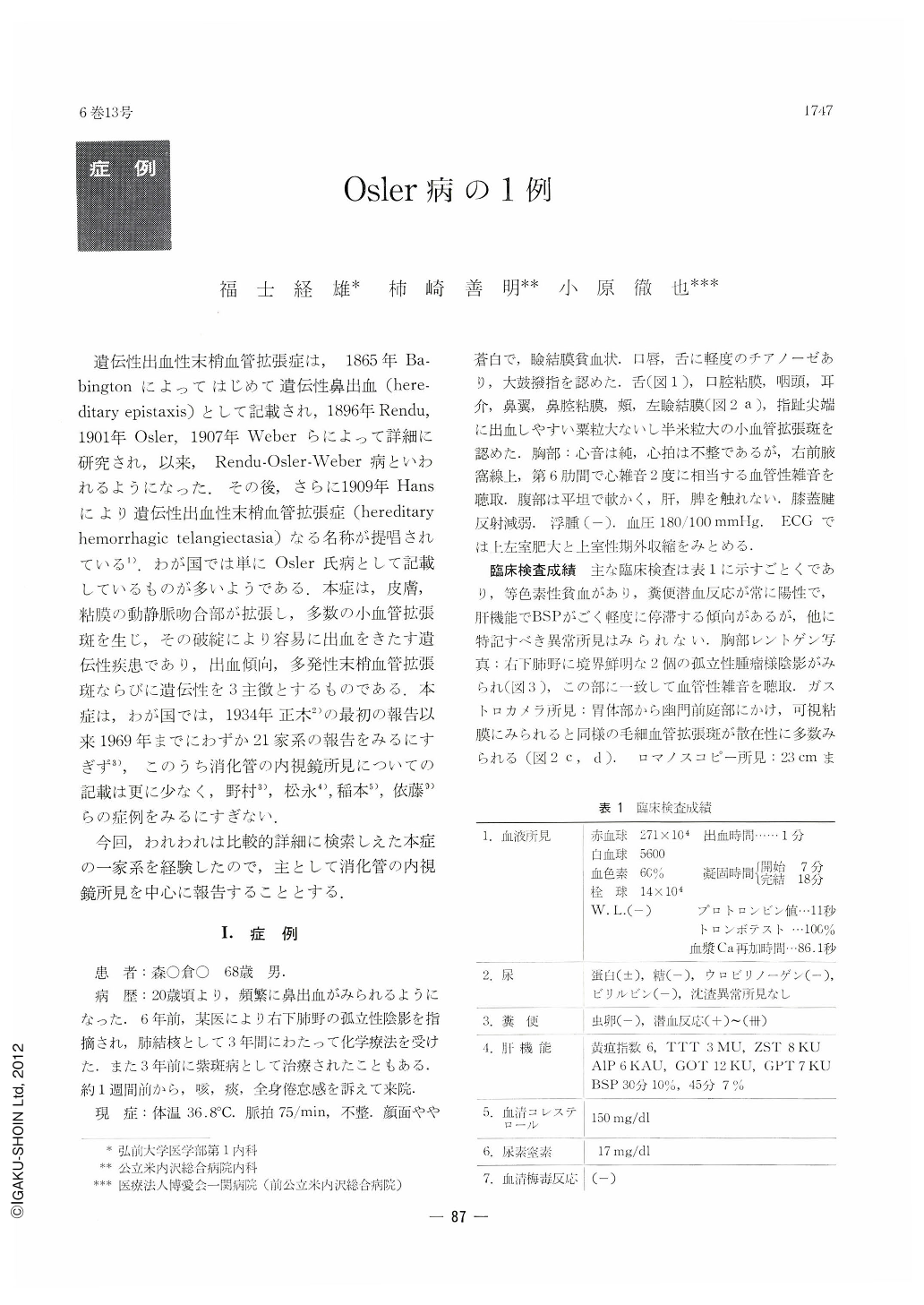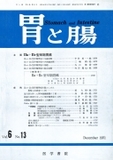Japanese
English
- 有料閲覧
- Abstract 文献概要
- 1ページ目 Look Inside
遺伝性出血性末梢血管拡張症は,1865年Babingtonによってはじめて遺伝性鼻出血(hereditary epistaxis)として記載され,1896年Rendu,1901年Osler,1907年Weberらによって詳細に研究され,以来,Rendu-Osler-Weber病といわれるようになった.その後,さらに1909年Hansにより遺伝性出血性末梢血管拡張症(hereditary hemorrhagic telangiectasia)なる名称が提唱されている1).わが国では単にOsler氏病として記載しているものが多いようである.本症は,皮膚,粘膜の動静脈吻合部が拡張し,多数の小血管拡張斑を生じ,その破綻により容易に出血をきたす遺伝性疾患であり,出血傾向,多発性末梢血管拡張斑ならびに遺伝性を3主徴とするものである.本症は,わが国では,1934年正木2)の最初の報告以来1969年までにわずか21家系の報告をみるにすぎず3),このうち消化管の内視鏡所見についての記載は更に少なく,野村3),松永4),稲本5),依藤9)らの症例をみるにすぎない.
今回,われわれは比較的詳細に検索しえた本症の一家系を経験したので,主として消化管の内視鏡所見を中心に報告することとする
A case of Osler's disease is discribed here together with the investigation of its family tree. The patient, a 68-year-old man, had since twenty years of age frequent bouts of epistaxis. The lips were cyanotic and there were reddish teleangiectatic small flecks, ranging from the size of a pinhead to that of a millet grain, on the cheeks, ear lobes, sides of the nose, conjunctivae and the tips of the fingers. The routine blood count showed slight normochromic anemia: red blood cell count, 271×104, hemoglobin, 60%, white blood cell count 5,600 and platelet 14×104. When endoscopically examined, the mucosa of the stomach, rectum and sigmoid as well as the serosa of the abdominal peritomeum displayed scattered small clusters of reddish teleangiomas due likewise to capillary dilation. What was most outstanding in the chest X-ray film was two tumor-like shadows both the size of a little finger tip located in the right lower lung field. A vascular bruit was heard over the site synchronously with systole, indicating a presence of pulmonary arteriovenous fistula here. Selective angiography of the abdomen also disclosed pooling of contrast medium in the liver and spleen, in addition to its shift from the arterioles to venulae. Arteriovenous fistulae or teleangiomas were again suspected here.
A study of the patient's family tree, ranging back to three generations and totalling to 24 persons, disclosed in 10, including this case, frequent bouts of nasal bleeding. Of 19 persons still alive, a history of epistaxis was elicited in 6 together with scattered small flecks of capillary dilation on the skin and the visible mucosa. The causes of death in five persons are as follows: exsanguination due to epistaxis in one, apoplexy in two, heart and liver diseases in one and unknown in one. Up to 1969 the number of reports on Osler's disease amounted only to 22 in Japan. Merely a few cases have been grossly examined for the mucosal changes in the digestive tract.

Copyright © 1971, Igaku-Shoin Ltd. All rights reserved.


